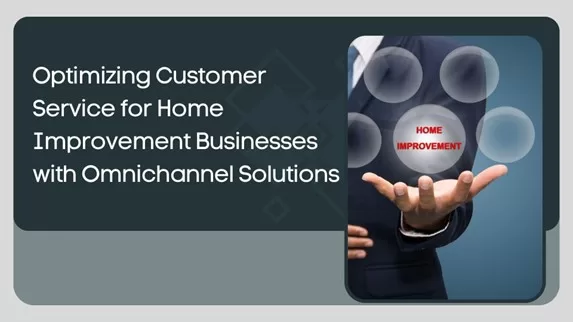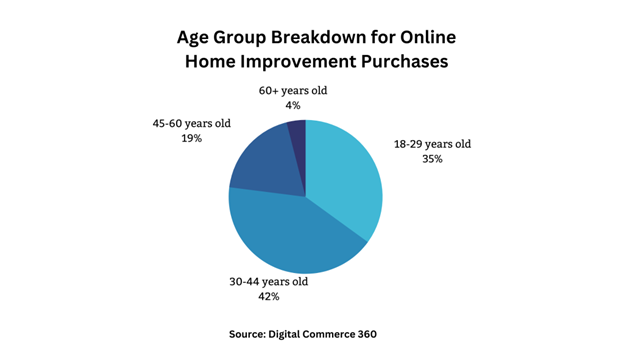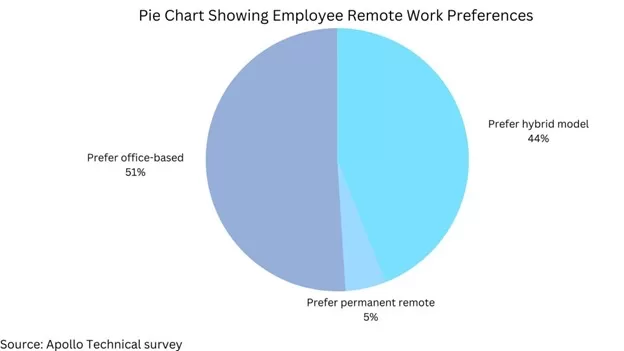The digital age has shattered linear shopping journeys. Today’s home improvement customers fluidly browse online inspiration, chat with in-store experts, and click to purchase products anywhere, anytime. Omnichannel is the new normal.

This complex web of intersecting online and offline touchpoints presents opportunity and challenge. To win, retailers must grasp shopper motivations, map fragmented journeys, and optimize each interaction through unified strategies.
The path ahead requires vision and agility to blend convenience and human connection into seamless experiences. For home improvement leaders, omnichannel innovation must become the guiding light.
The Essence of Omnichannel Marketing
Omnichannel marketing seamlessly bridges online and offline shopping experiences. The surge in U.S. online market dollar sales for home improvement, which grew by double digits last year, and the fact that 70% of consumers are turning to online home improvement retailer sites for their DIY needs, underscores the importance of this unified approach.
The best call center integration for Salesforce can connect call center interactions with your CRM data to enable excellent service across channels.
This provides a holistic view of each customer as they engage across touchpoints. With omnichannel being critical for home improvement retailers, tools that facilitate consistency and visibility across channels are key.
Age Group Breakdown for Online Home Improvement Purchases
Online home improvement purchases skew towards younger demographics, with millennials and Gen X leading spending. As shown in the table below, 77% of online buyers are under 45, while only 4% are over 60.
Visualizing this age group breakdown in a pie chart illustrates the dominance of younger generations driving e-commerce growth. Capturing their digital-first preferences will be key to omnichannel success.

| Age Group | Percentage |
| 18-29 years old | 35% |
| 30-44 years old | 42% |
| 45-60 years old | 19% |
| 60+ years old | 4% |
5 Key Strategies for Optimizing Omnichannel Experiences
With omnichannel marketing essential for today’s home improvement businesses, what strategies can be implemented to enhance this experience?
For example, integrating your call center with Salesforce can provide visibility into customer issues and enable better service across channels.
Beyond call center integration for Salesforce, there are several other key strategies to optimize omnichannel experiences:
With omnichannel marketing essential for today’s home improvement businesses, what strategies can be implemented to enhance this experience?
1. Relevant, Integrated Content
At the heart of any omnichannel strategy is effective content. Considering that the majority of online dollar sales in home improvement come from major appliances and home décor, relevant and accurate content is critical.
By analyzing customer needs, businesses can create content that guides shoppers through a seamless journey across all channels.
Some key ways to develop relevant, integrated content include:
- Conducting market research to understand customer pain points and interests when shopping for home improvement products. This can inform the content that addresses their needs.
- Creating unified messaging and assets that can be adapted for different channels – website, mobile apps, in-store displays, etc.
- Mapping out the customer journey to identify key moments where targeted content would be valuable. For example, how-to guides for installation.
- Optimizing content for both search engines and customers by focusing on useful, keyword-rich information.
- Leveraging user data and analytics to continuously refine content based on performance across channels.
- Developing omnichannel content types like interactive 3D models, AR experiences, videos, and more to engage customers.
- Collaborating across teams to ensure content is consistent and integrated into campaigns seamlessly.
2. Consistent Branding and Messaging
Beyond content, consistent branding and messaging across platforms is crucial. The increasing popularity of buy-online-pick-up-in-store (BOPIS) options among DIYers highlights the need for a unified brand experience, on and offline.
Ways to achieve consistent branding and messaging include:
- Developing brand guidelines and assets that are standardized across channels. This includes logos, fonts, imagery, tone of voice, etc.
- Conduct regular brand audits to identify and address any inconsistencies in external communications.
- Providing templates and marketing collateral for internal teams to ensure cohesion.
- Building culture and processes that align teams on brand values and messaging.
- Tracking performance metrics by channel to optimize branding strategies over time.
- Leveraging customer data to personalize messaging while maintaining core branding.
- Investing in marketing technologies that centralize asset management and enable omnichannel campaigns.
3. Platform Integration
While consistency is key, integrating content strategies across digital platforms ensures messaging is streamlined. With online spending rising among millennials and boomers, businesses must focus on clarity and transparency when promoting campaigns across channels.
Strategies for integration include:
- Developing APIs and connections between e-commerce platforms, CRMs, marketing systems, and more.
- Building unified reporting dashboards that provide visibility into performance across touchpoints.
- Using marketing automation to deliver coordinated messaging across digital channels.
- Optimizing websites and apps for seamless omnichannel experiences.
- Creating centralized databases and digital asset management systems.
- Providing employees with cross-channel insights and training on integration best practices.
- Testing and iterating based on how customers respond to integrated campaigns.
4. Holistic Customer Focus
In pursuing integration and consistency, the bigger picture cannot be ignored. 30% of home improvement shoppers still prefer to see products before purchasing, emphasizing the need for an approach that considers both online and offline experiences.
A holistic focus requires:
- Mapping customer journeys from initial research to post-purchase across online and offline touchpoints.
- Conducting ethnographic research to gain first-hand insights into motivations and pain points.
- Developing buyer personas that capture behaviors and needs across channels.
- Building experiences optimized for conversion at each stage of the journey.
- Offering flexible fulfillment like BOPIS for customers who want to see before buying.
- Providing stellar service and engagement in-store to complement digital channels.
- Leveraging data to deliver personalized, relevant messaging and product recommendations.
- Continuously optimizing based on changing behaviors and emerging channels.
5. Journey Mapping
With customer journeys evolving, regular assessments are crucial. By identifying key touchpoints and optimizing them, businesses can enhance omnichannel experiences. Surveys, customer feedback, and usability testing provide invaluable insights.
Effective journey mapping entails:
- Conducting workshops and research to visualize the end-to-end experience.
- Identifying pain points, blockers, moments of delight, and opportunities.
- Validating maps with qualitative customer input.
- Prioritizing key moments with the biggest impact or need for improvement.
- Developing and executing an optimization roadmap.
- Institutionalizing journey mapping processes so they are continual.
- Sharing insights cross-functionally so all teams enhance experiences.
- Updating based on changing customer behaviors and innovations.
Final Thoughts
Omnichannel is here to stay, but agile, customer-centric strategies are key as it continues to evolve. By understanding shoppers’ motivations and mapping their fragmented journeys, retailers can identify opportunities to connect experiences through unified branding, relevant content, and seamless touchpoints.
However, optimization is an ongoing process of listening, enhancing, and adapting as behaviors change.
The connective tissue should be customers at the center. Their needs and desires shape each interaction. The goal is not just channel integration, but personalization that sparks devotion.
For home improvement retailers, the future of omnichannel lies in human connections – expertise shared, problems solved, projects brought to life. While data and technology will advance, letting customers shine through every touchpoint will be the omnichannel difference that matters most.
FAQ
1. How does omnichannel marketing differ from multi-channel marketing?
Omnichannel provides an integrated experience across channels, while multi-channel focuses on individual channels without ensuring a seamless transition between them.
2. Why is content analysis important in omnichannel marketing?
Analyzing content helps ensure it is effective, consistent, and relevant across channels, guiding customers smoothly through their journey.
3. How can businesses adapt their omnichannel strategies to changing customer behaviors?
Regular journey mapping, market trend analysis, customer feedback, and usability testing allow businesses to continuously refine omnichannel strategies.









